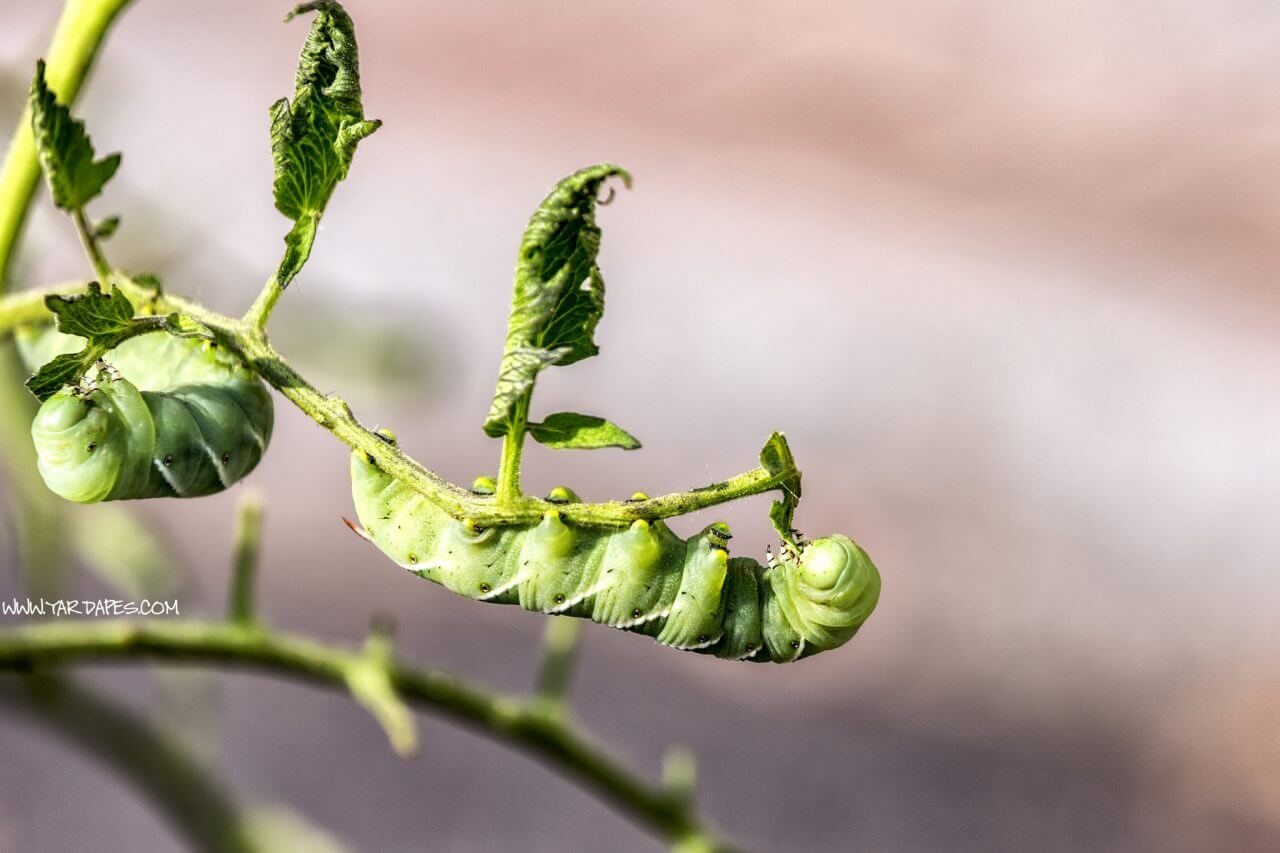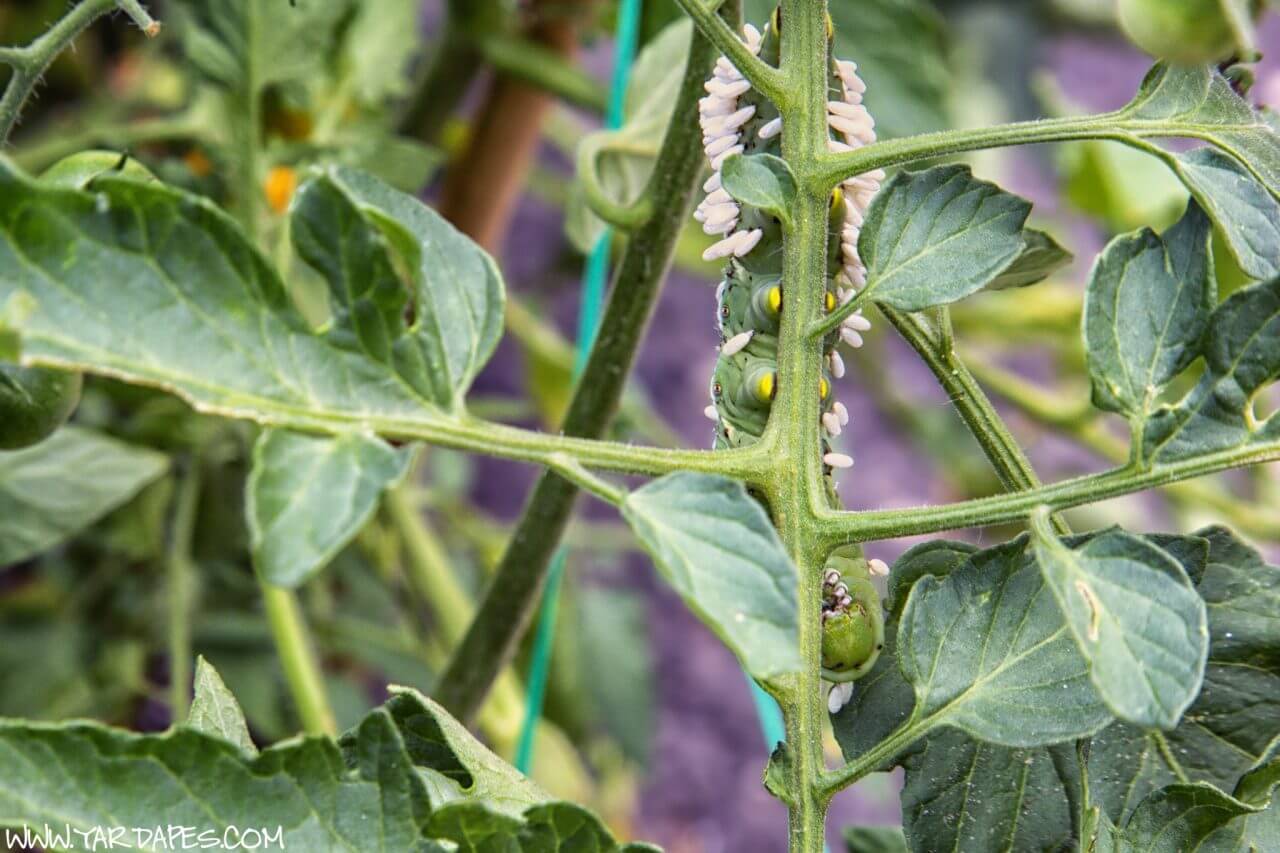
Above: A tomato hornworm infested with braconid wasps.

Above: Two tomato hornworms (sans wasp cocoons) consume a tomato bush.

Above: The underside of a tomato hornworm infested with braconid wasps.
“The Stuff of Nightmares” Is Actually a Very Good Natural Defense System for Your Garden
We found some interesting guests on our tomato plants this morning, therefore it is now officially “gross (but cool) fact time!”
Tomato hornworms (a common caterpillar in our region) can destroy a healthy plant in days, but if you see one with white “eggs”, like in these pictures from our tomato plants this morning- leave it be!
Those white wiggly things are actually beneficial wasp cocoons. The tiny wasps lay their eggs inside the caterpillar, which in turn feed off the hornworm until they hatch on the outside upon completion of the various growth phases.
Why not just pluck them off, especially with those creepy wasp cocoons?
First- A hornworm without obvious presence of braconid wasp larvae should generally be removed when spotted. It may have had eggs laid that haven’t emerged from within the caterpillar, but it would be fairly difficult to determine without X-Ray vision of some sort. As we saw last year with our plants and hornworms, they can defoliate a plant literally overnight. So-pluck away.
Obvious presence of wasp coccoons is a different story. While unsettling to view, the wasps are harmless to humans (no stinging!) and specifically target pests like the tomato hornworm. If you have a lot of vegetable plants it might be hard to spot hornworms every day as they move quickly and are very well camouflaged.
Really, if it bothers you, it’s fine to go ahead and remove a hornworm, wasp coccoons and all, but you would lose the strength in numbers aspect of natural pest control.
-Grant
